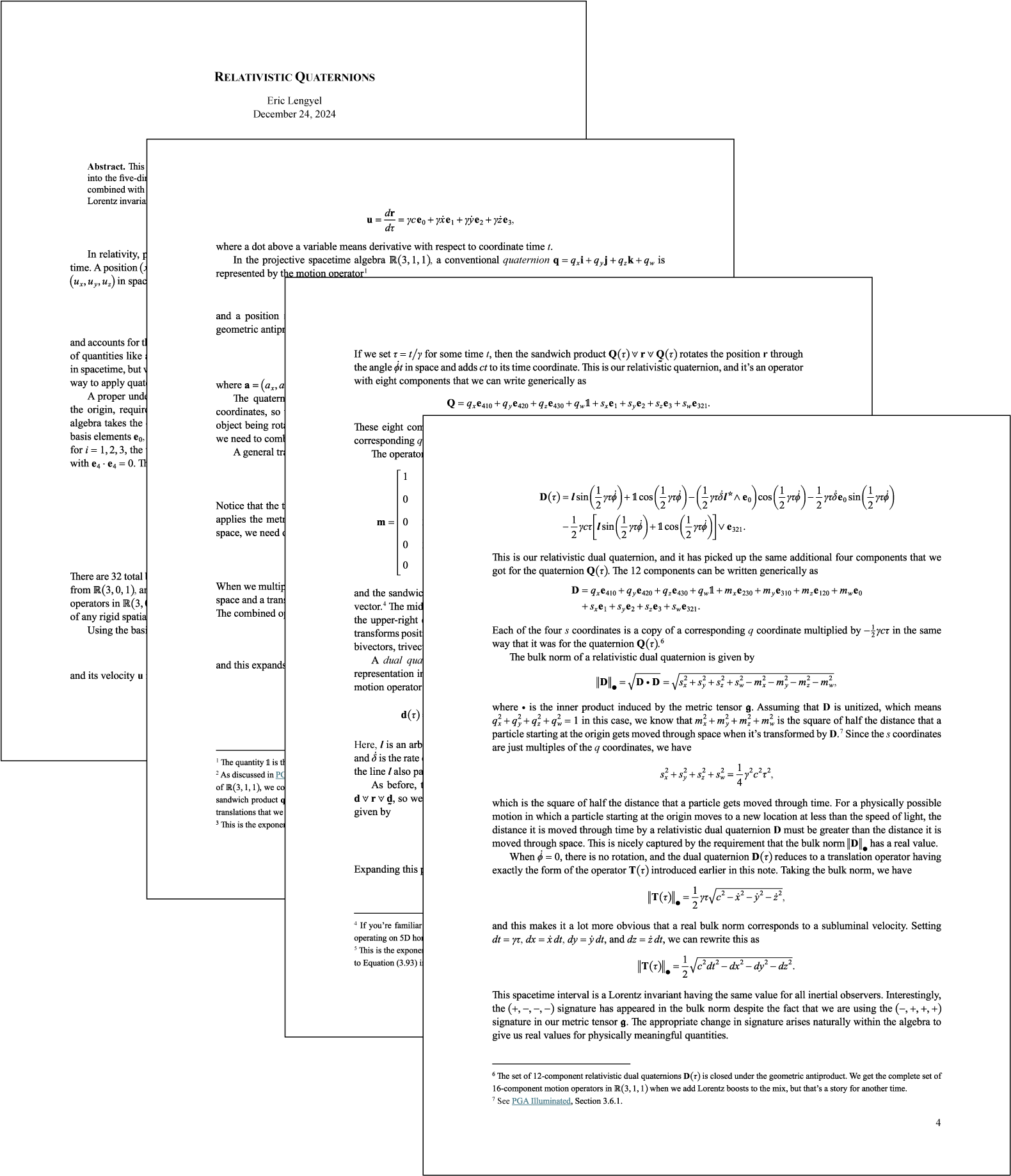Professional Equation Editor
for Windows 10/11

About
Radical Pie is a professional equation editing application for Windows 10/11 that produces mathematical typography of the highest possible quality. It’s suitable for use in the most demanding technical documents ranging from conference papers to large textbooks. It’s also designed to be a perfect solution for putting equations in slide presentations and YouTube videos.
Radical Pie is not a word processor. It just handles the math. It’s seamlessly integrated with Microsoft Word, and it produces vector output that can be used in most other applications that support vector graphics. We have gone to great lengths to ensure compatibility when equations are transferred to different applications and moved to different computers.
If you’re a fan of the classic versions of MathType, then you’ll feel right at home in Radical Pie. Except now, you’ll be using the modern alternative with access to the next generation of equation editing features, and you’ll get superior results across the board.
To the right is an example of a short math-heavy paper entitled Relativistic Quaternions written in Microsoft Word with Radical Pie. The original Word document is included in the examples download at the bottom of this page.
Features
This is a short list of the major features. There are many details and fine points of mathematical typesetting not mentioned here.
- Can edit in three modes: math, chemistry, and plain text. In text mode, kerning, ligatures, and combining accents are applied.
- Has quick access to italic, bold, Greek, script, fraktur, double-struck, and several more typefaces.
- Includes wide support for Unicode characters, even emoji. Provides access to thousands of mathematical symbols.
- Ships with our own mathematical font that ensures a consistent look across a large variety of technical glyphs.
- Is highly configurable, allowing users to fine-tune their typesetting preferences for a wide variety of constructs.
- Supports all the usual mathematical notation: brackets, scripts, fractions, radicals, iterations, integrals, limits, over/under marks, matrices...
- Includes drawing tools for highlighting, boxes, arrows, dashing, etc., that can be used with annotations containing separate equations. Some examples are shown below.
- Uses our own Slug Library for extremely high quality on-screen rendering.
- Saves to a native text-based format using the OpenDDL syntax. Can also save to SVG, PDF, and EMF vector formats.
- Can easily copy and paste into other applications like Microsoft PowerPoint or Adobe Illustrator.
- Includes full OLE integration with Microsoft Word for seamless embedding, even in extremely large documents.
- Capable of converting Office Math (OMML) equations to Radical Pie format.
- Has support for unlimited undo and redo.
- Recognizes TEX symbol names.
Licensing Model
Radical Pie is sold under traditional software licensing terms for $60. You purchase it once, and the version you bought works forever. No subscriptions. No signing in. No connecting to a server on the internet.
Documentation and Help
See the Radical Pie documentation for information about using the software. You can also join the Discord server if you’d like to ask questions.
Examples
Here are a few examples of equations created in Radical Pie with added drawings and annotations. These are actual SVG files generated directly by Radical Pie. They contain embedded equation data, so it’s possible to open them in Radical Pie and continue editing.
This is the rendering equation used in 3D graphics. Drawing objects like the green highlighting and various arrows are attached to anchor points in the equation. This means that when the equation is edited and the anchor points move, and the objects you’ve drawn dynamically adjust to the proper size and position in relation to the parts of the equation you originally attached them to.
The following is the formula for a general circle in 3D conformal geometric algebra. The colored text appearing in this example and the previous example are called annotations, and these can be attached to anchor points on drawing objects. Each annotation can be something simple like a text label or an arbitrarily complex mathematical expression.
This is an 8 × 8 matrix illustrating an exomorphism transformation in 3D exterior algebra. The lines and colored boxes were attached to anchor points inside the matrix, and annotations were attached to label all of the parts.
The files for the above examples and several more are available here:
.png)





